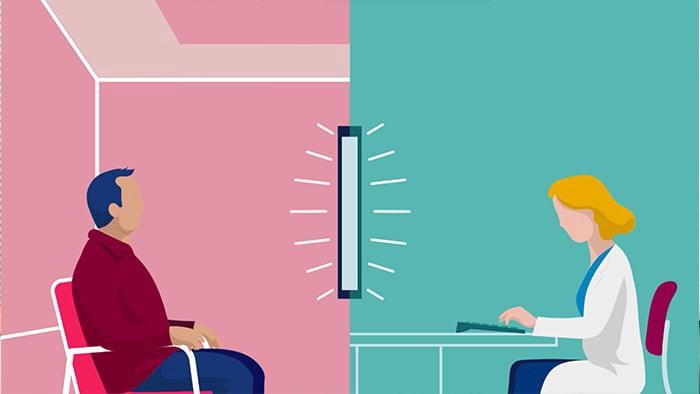Philips
Alexandra Gonçalves, MD, MMSc, PhD
Jul 28, 2021
If I can order groceries from my phone and I can schedule a car to pick me up from anywhere, why can’t healthcare be more convenient?
This is a sentiment I hear repeatedly from people as a reason for why they put off routine health appointments.
It’s a message we must hear loud and clear if we hope to reengage people after the pandemic disconnected them from their care.
We have to truly focus on the patient’s needs and on their expectations for the care experience.
- “Dr. Google,”
- telehealth visits,
- online health screening and
- wearable technology
have all shifted people’s expectations of how to seek and receive care.
We have to truly focus on the patient’s needs and on their expectations for the care experience …have all shifted people’s expectations of how to seek and receive care.
We have all seen that it’s possible for healthcare delivery to be more nimble — and now patients (and people in general) want more of it.
Healthcare must keep pace with these shifts in consumer expectations and continue to invent innovative ways to empower and educate healthcare consumers.
Deferring care
Patient deferment rates were nearly at an all-time low prior to the pandemic.
- By June of 2020 they reached 30%, up from 22% in Q1 of 2020. 1
- Why?
Nearly half cited coronavirus fears as the reason.
The problem is particularly troublesome among patients 75 and older, which accounted for nearly 68% of all care delays during the pandemic.
Recruiting them back into care is a challenge.
Recruiting patients back into care is a challenge.
I have grave concerns about the ramifications of patients deferring care.
A recent report on cancer screenings at the University of Cincinnati Cancer Center offers a cautionary story. 2
- The pandemic caused “considerable disruption” to their lung cancer screening program,
- forcing the postponement of more than 800 appointments for lung cancer screening in March 2020.
When screening fully resumed on June 1, the percentage of people tested who had lung nodules that were suspicious for cancer had increased
- from 8% before the pandemic
- to 29%.
… the percentage of people tested who had lung nodules that were suspicious for cancer had increased from 8% before the pandemic to 29%.
Even after screening returned to a normal schedule,
- the percentage of new patients getting screened remained low and
- more patients skipped their scheduled low-dose CT scans than in the past.
Similar trends for cardiovascular disease and diabetes are equally troubling. 3
While we don’t yet fully understand the impact of these trends on population health in the long run, I fear we’ve taken a big step backwards.
- Preventative care and
- active screening
have been key in our fight against these diseases.
If we don’t reengage patients by adapting to their new expectations, we risk losing hard-earned progress.
Meeting new expectations
At the same time, our health systems are constrained and inefficient and not delivering the types of experiences that patients expect.
… our health systems are constrained and inefficient and not delivering the types of experiences that patients expect.
Just think about all the ways that a patient might feel like an afterthought in their own care.
- Long wait times at the doctor’s office have become the norm.
- Bouncing from one appointment to the next at different locations is an exhausting experience.
- Having to repeat exams because the preparation instructions weren’t clear is also emotionally taxing.
New innovations that deliver convenience, patient-provider rapport and meaningful engagement — either virtual or in person — are the way forward.
New innovations that deliver convenience, patient-provider rapport and meaningful engagement — either virtual or in person — are the way forward.
- For example, we (Philips) developed an app to help engage patients virtually by helping them (1) prep for elective procedures and; (2) improve the experience of visiting a hospital.
This technology creates a virtual waiting room that supports a safe arrival at the hospital so that people aren’t sitting in a crowded waiting room until their provider is ready to see them.
Sometimes travelling to a physical location isn’t even necessary.
Telemedicine has been the face of the shift toward convenient virtual care, for example, by increasing patient access to specialists who may be in faraway locations.
Yet we’re only scratching the surface of what’s possible with virtual care.
- Tele-ultrasound solutions, for example, are enabling improved access for remote collaboration, access to specialists, and virtual training. I expect we will continue to see such examples of telehealth innovations help patients get the best care possible regardless of their location.
When patients do have to visit a healthcare facility, it will be paramount that their experience is patient-centric.
That’s why Philips is focused on technologies that help reduce patient anxiety, such as ambient experiences that calm patients, and high sensitivity CT scans that shorten exams and deliver definitive results.
Renewed focus on what matters most
A lot of work remains to be done to reverse the trend of patients deferring care and to meet patient expectations for how care should be delivered.
Focusing on convenience and empathy is the essence for patient-centered offerings across the care continuum — from healthy living, prevention, diagnosis, treatment and home care.
From my perspective as a physician, I am excited about this future as I believe patient-centric solutions can restore connection and compassion to medicine by allowing providers to focus on what matters most — the unique and individual patient needs.
About the author
Alexandra Gonçalves, MD, MMSc, PhD
Chief Medical Officer, Precision Diagnosis, Philips
Alexandra Gonçalves is Chief Medical Officer, Precision Diagnosis for Philips. Dr. Goncalves is a cardiologist with a business acumen and an extensive record of multi-disciplinary collaborations spanning the globe, as educator, author, editor, clinical researcher and though leader.
Originally published at https://www.philips.com.












